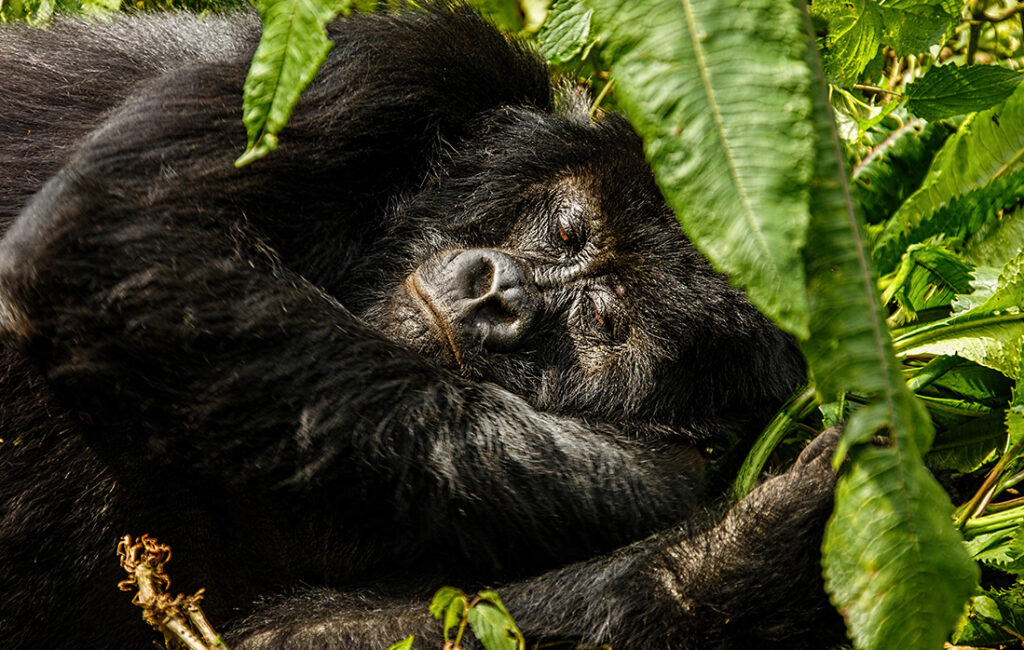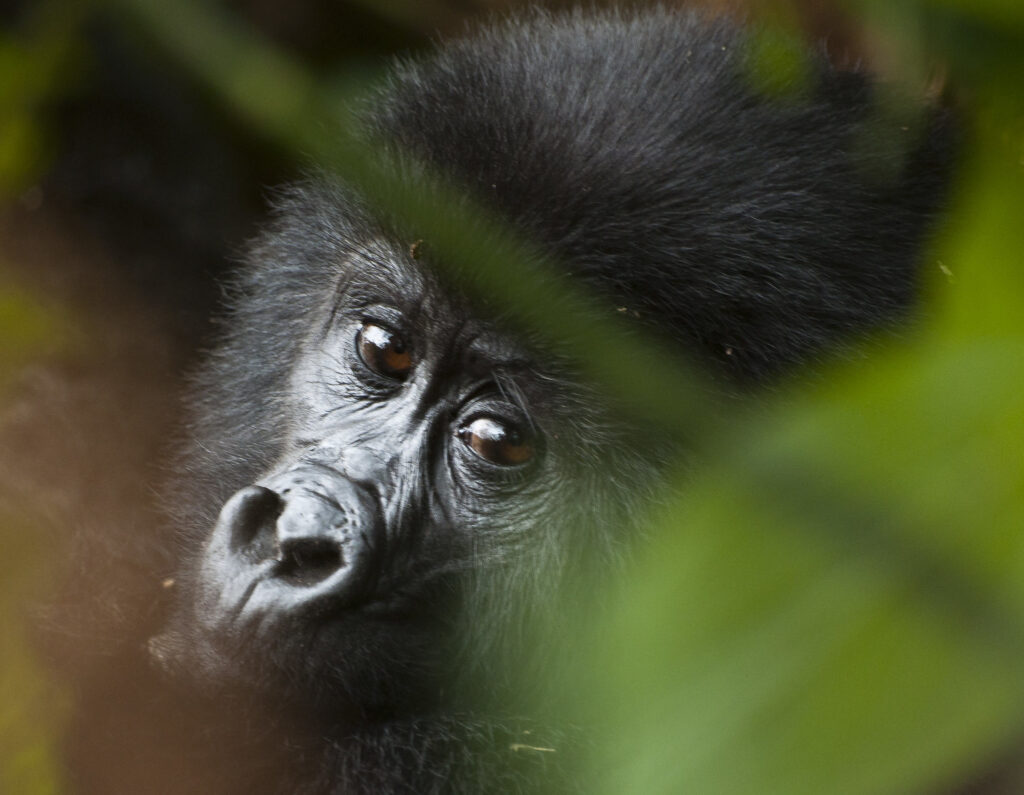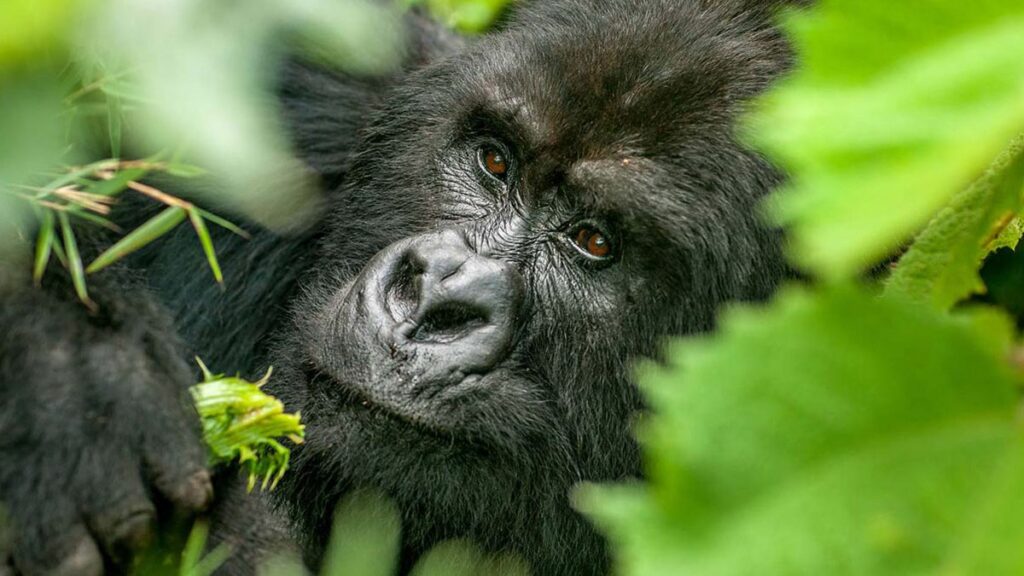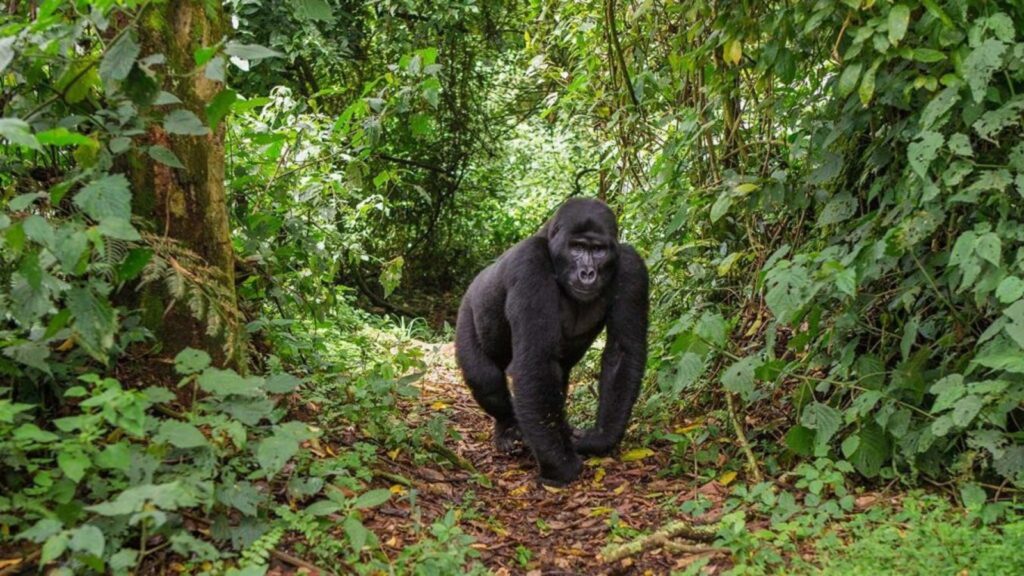Gorilla Trekking Nighttime Behavior—What Happens After Dark?
Gorilla nighttime behavior. Gorilla trekking offers a rare glimpse into the lives of mountain gorillas during the day. But what happens when the sun sets? Mountain gorillas exhibit fascinating nighttime behaviors that are largely unseen by trekkers. Understanding their habits after dark gives a deeper appreciation for their social structure, survival strategies, and daily rhythms.

Sleeping Habits of Gorillas
Mountain gorillas are diurnal, meaning they are active during the day and rest at night. As dusk approaches, they build nests to sleep in. Adults usually construct nests on the ground, using leaves and branches for comfort and insulation. Occasionally, younger gorillas or lighter individuals may sleep in low branches for safety.
Each gorilla builds a new nest every night, and the silverback often sleeps centrally to protect the group. Nest-building is both a social and protective behavior, ensuring each gorilla has a secure place to rest.
Nighttime Social Behavior
Although gorillas are less active after dark, some interactions continue briefly before full rest. Young gorillas may play quietly near their nests, and mothers groom their offspring. Vocalizations are minimal at night, but occasional soft grunts or coughs help maintain group cohesion and alert others to potential disturbances.
Environmental Factors Affecting Night Behavior
Mountain gorillas’ nighttime habits are influenced by temperature, forest density, and predator presence. In colder months, gorillas may nest closer together for warmth. The forest’s dense canopy provides protection from wind and rain, and sleeping on the ground is safer than climbing trees for heavier adults.
Implications for Trekking and Research
Trekking typically ends before nightfall for safety and conservation reasons. However, researchers use camera traps and night monitoring to study gorilla nocturnal behavior. Understanding these patterns helps conservationists:
- Assess gorilla health and stress levels.
- Track movements and habitat use.
- Ensure safe interactions between humans and gorillas during the day.
For trekkers, knowing that gorillas spend the night resting and rejuvenating adds context to their daytime energy and playful behaviors.
Conclusion
Mountain gorillas lead structured lives that continue beyond daylight hours. At night, they build nests, rest, and maintain social bonds quietly and efficiently. While trekkers do not witness these behaviors firsthand, understanding their nighttime routines deepens the appreciation of gorilla intelligence, adaptability, and social structure. The forest comes alive with subtle activity, even after the trekking trails fall silent.




